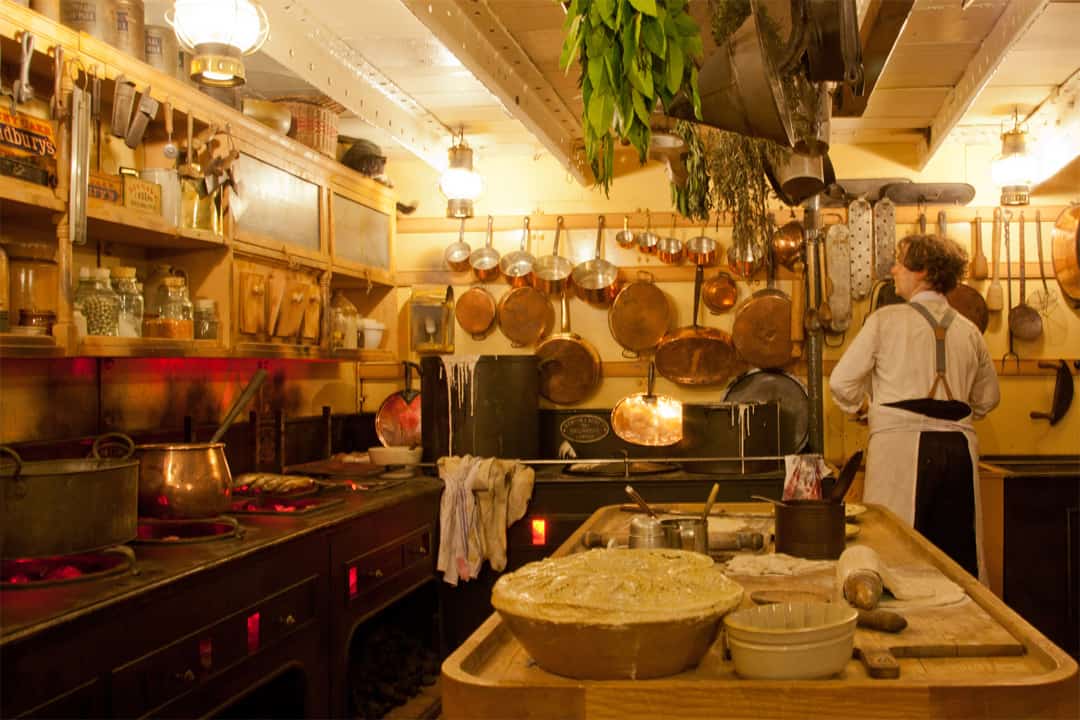It was an immense task to feed over six-hundred passengers for two months. Rather than bourbons or custard creams, the SS Great Britain larders were stocked with rock hard water biscuits. These biscuits, often referred to as ‘hard-tack’ or ‘ship’s biscuits’, were made from flour, water and sometimes salt, and were double-baked on land and stored on board. The biscuits were a ship’s staple because they wouldn’t get mouldy during the long sea voyage. However, they were often infested with weevils and the passengers had to tap out the bugs before soaking them to make them soft enough to eat.
Steerage and crew on board the SS Great Britain survived on biscuits, rather than bread which was baked on board for the other classes of passengers. Second class passengers were provided with bread, but when stocks were running low they would have been treated to ship’s biscuits.
Although the passengers didn’t seem to be the biggest fans of the biscuit they clearly made an impression as they often feature in the surviving diaries. Edward Towle, a second-class passenger, writes about mixing the biscuits with hot water to make a sort of porridge and sweetening it with treacle. Allan Gilmour, a 17-year-old, third-class passenger, describes lathering them with jam to make them edible.
In the diaries written by the first-class passengers, they describe their biscuits as ‘excellent’, ‘superior’ and ‘fancy’, whereas the steerage and second class passengers didn’t seem as happy and use words such as ‘inferior’, ‘broken’ and ‘musty’.
In fact, the biscuit was such an important part of daily ship life that one passenger, Herman Zumstein, even used it as a way of explaining how close another ship was, writing that a small schooner was so close that ‘a biscuit might be thrown aboard’.
As the only surviving bit of food from the SS Great Britain in the Trust’s Collection, the ship’s biscuit was a treasured possession of the Rowland family and kept as a souvenir after their 1874 voyage.
Around a hundred years later the biscuit was brought in by a descendant of the Rowland family and reunited with the ship. It’s currently on display in the Dockyard Museum.
What would you mix yours with to make it edible?




